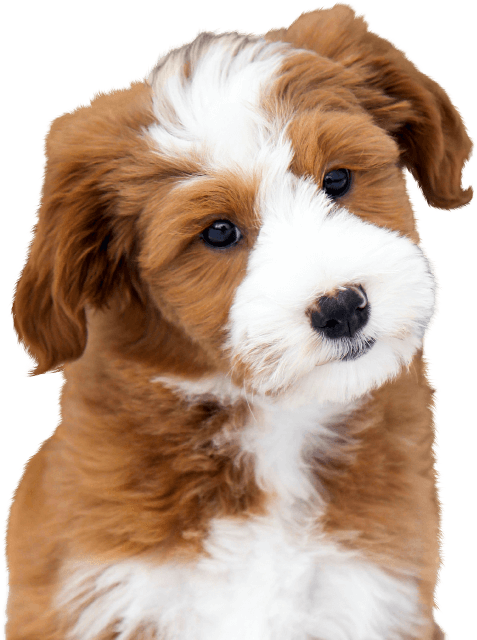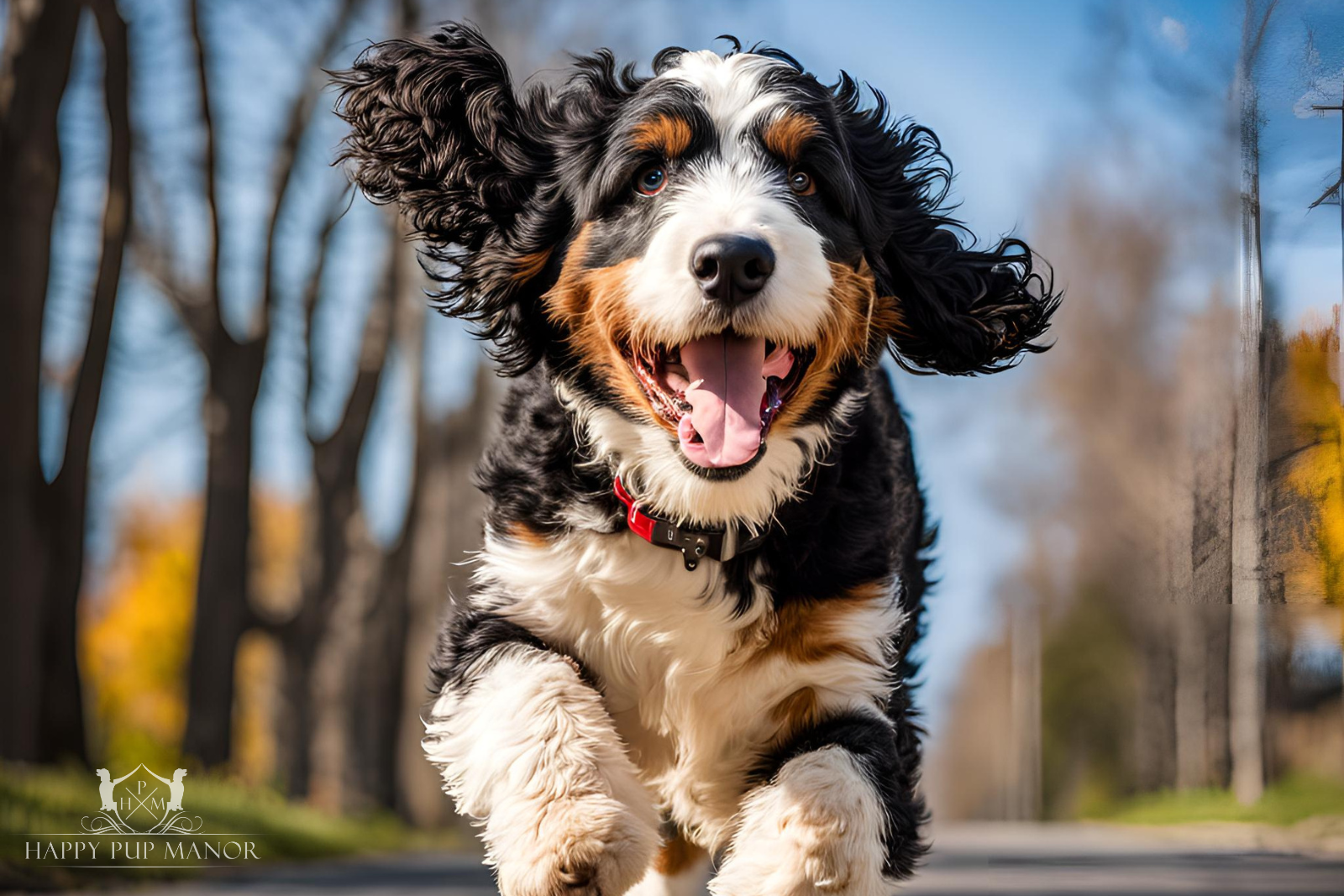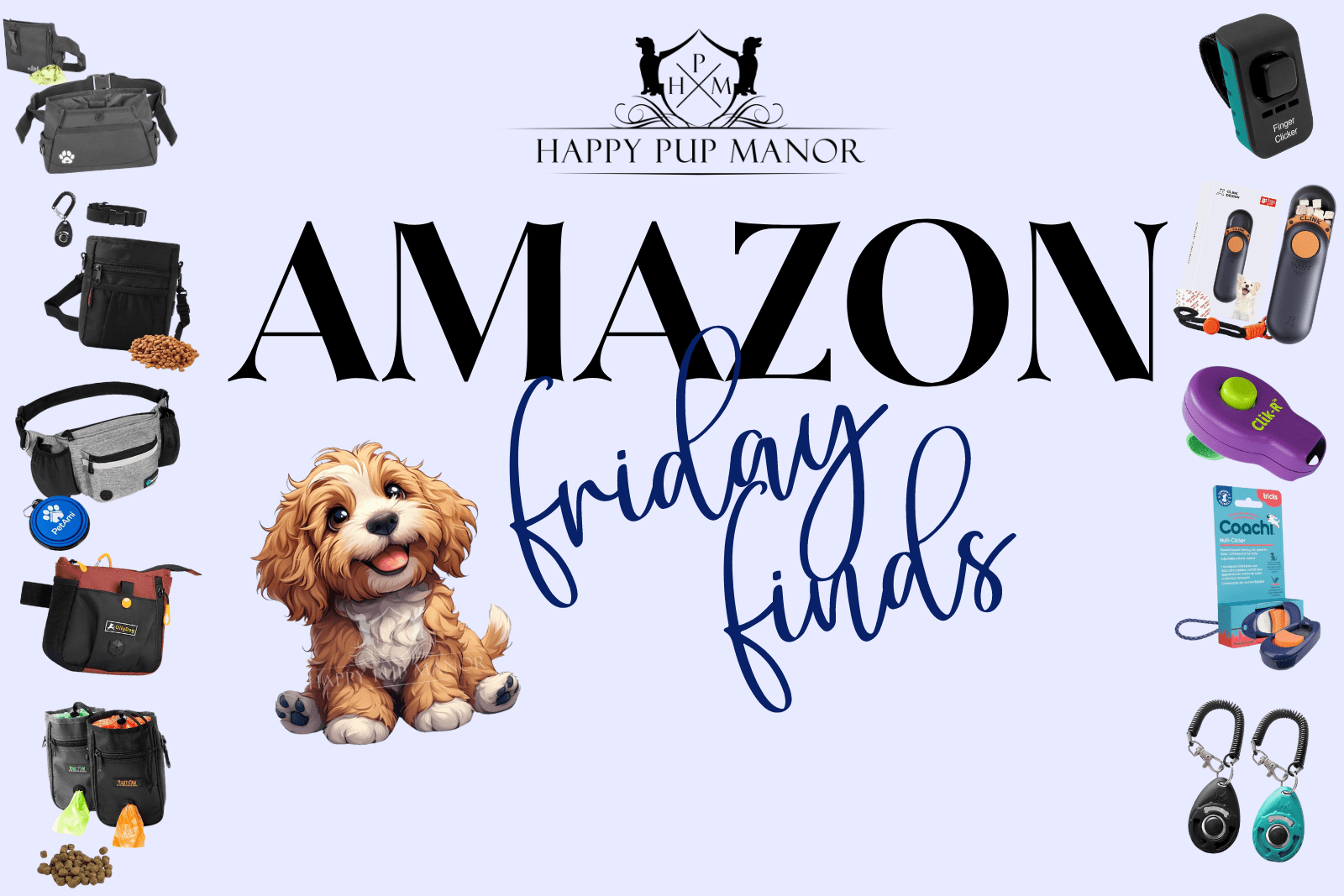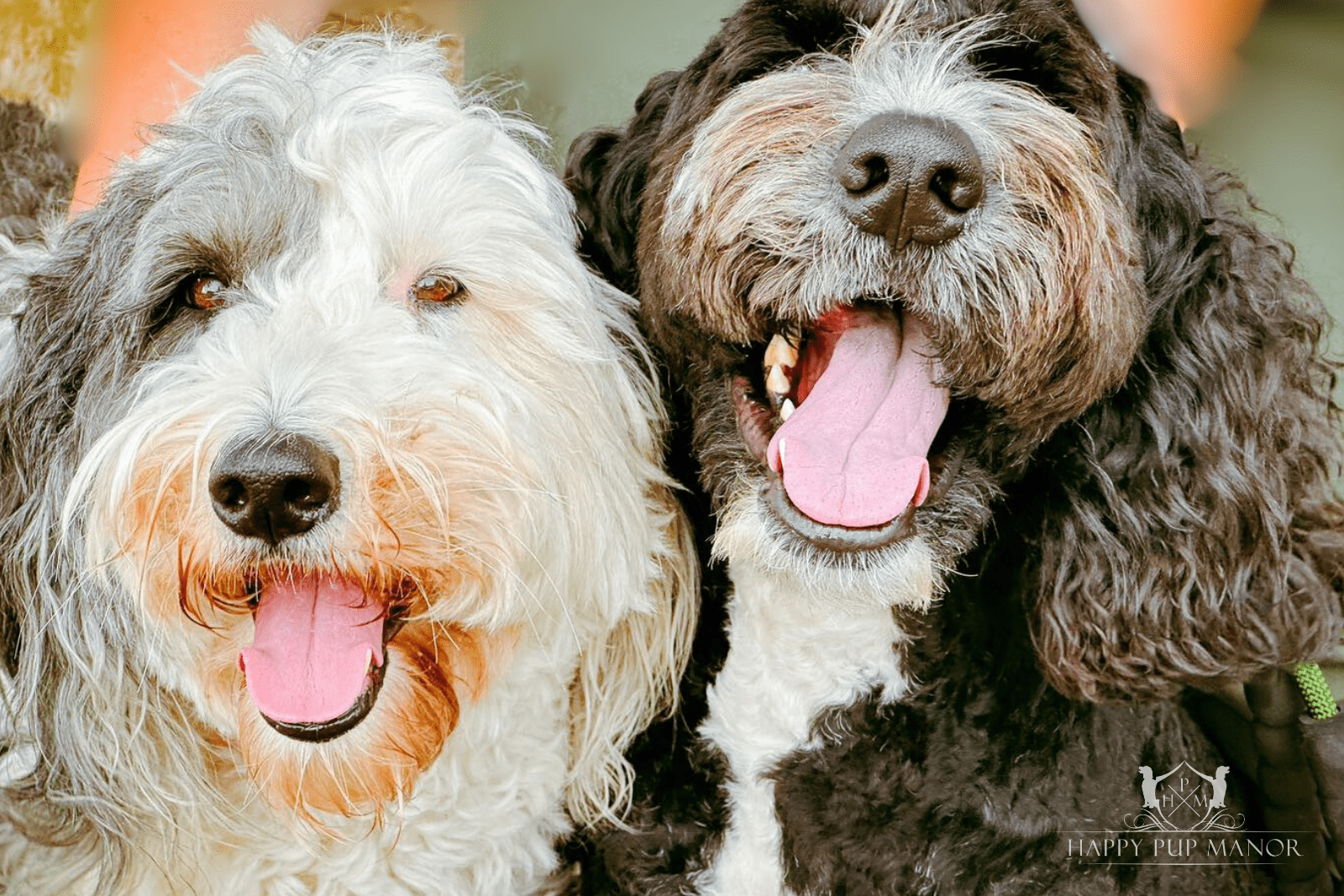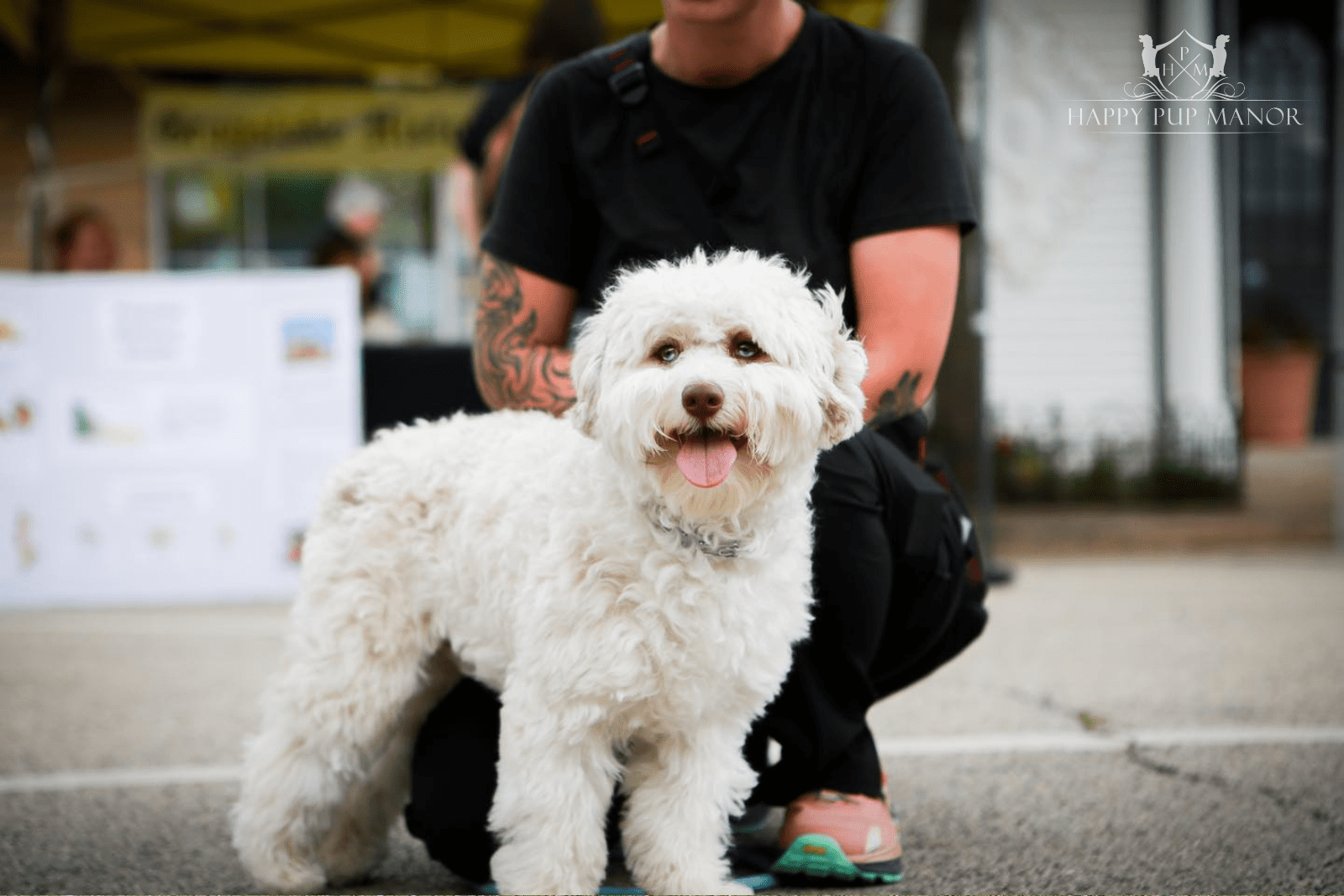How to Train for Nice Puppy Meet and Greets

How to Train for Nice Puppy Meet and Greets
Meeting friends and family with your pup is fun, and having a nice meet-and-greet requires early training. Without proper training and preparation, your pup might get too excited or anxious, which can cause unnecessary stress for both of you.
To ensure your puppy develops his socialization skills and behaves well, you must follow a systematic and consistent training approach ahead of the actual meet and greets. This way, you have plenty of time to prepare your dog and make adjustments if needed.
Happy Pup Manor has professional trainers and dog training facilities to help your pup get ready for meet and greets, but we have prepared a guide for the things that you can do at home!
Start Socializing Your Puppy Early On

Early socialization is crucial for puppies to develop into well-adjusted and confident dogs. Exposing them to a variety of people of different ages, genders, and appearances helps them learn to feel comfortable and secure around a diverse range of individuals.
You should also expose your puppy to various environments, sounds, and situations from an early age for their development. By exposing them to different environments such as parks, streets, and indoor spaces, as well as various sounds like traffic, sirens, and household noises, you help them become accustomed to the world around them. This early exposure lays the foundation for positive interactions and reduces the likelihood of fear or aggression toward specific groups of people later in life.
To start with socialization training, you can do the following:
-
Start in a Controlled Environment
Just like humans, some pups can get overwhelmed by meeting new people, so the easiest way to help them is to start socialization in a place where they are comfortable. You can choose a secure and quiet place with minimal distractions, like a fenced backyard or a quiet room in your house.
-
Begin with Familiar People
You can invite friends and family members whom your puppy already know and are already comfortable with for your first socialization sessions. This way, your pup will not be overwhelmed with meeting new people and doing training at the same time.
-
Let Your Puppy Approach On Their Own
Allowing the puppy to approach familiar people at their own pace is key to building trust and confidence in social interactions. Giving the puppy control over the situation empowers them to feel safe and comfortable when meeting new people.
-
Introduce New People Gradually
Gradually introduce new people one at a time, allowing your puppy to acclimate to different individuals at their own pace. Monitoring the puppy’s body language and behavior is crucial during these introductions to ensure they remain relaxed and happy. Look for signs of stress or discomfort, such as trembling, lip licking, or avoiding eye contact, and adjust the introduction accordingly. It’s essential to prioritize the puppy’s comfort and well-being throughout socialization to build positive associations with meeting new people.
-
Monitor Interactions with Other Animals
Introducing your puppy to friendly and well-socialized animals one at a time is a great way to promote positive socialization experiences. Pay close attention to all animals’ body language and behavior to prevent any signs of aggression or fear. Positive and controlled interactions with other animals can help the puppy develop important social skills and build confidence in their future interactions with other dogs and animals.
-
Gradually Increase Exposure
Once your puppy is comfortable with one-on-one interactions, you can begin introducing them to larger groups of people or controlled socialization classes for dogs. These environments provide opportunities for your puppy to interact with a variety of individuals and dogs in a supervised and controlled setting.
Train Your Puppy Early

Teaching your puppy basic obedience commands like “sit,” “stay,” and “come” will prove to be very helpful during meet-and-greets. Your pup will learn to behave well, and you will also have control of your pup wherever you are. You can enroll your pup in an obedience training program, but can start with the basic training at home as early as your pup can follow:
-
Start with the SIT Command
To teach your puppy to sit on command, simply hold a treat close to their nose and move it upwards slowly. As the puppy sits down, say “sit” and immediately reward them with the treat. Practice this command multiple times a day until the puppy can sit on command without needing a treat.
-
Move on to the STAY Command
After your puppy has learned to sit on command, you can introduce the “stay” command. To do this, show your open palm to the puppy while saying “stay” in a firm but calm tone. Take a step back, and if the puppy remains sitting, reward them. Over time, increase the distance and duration of the “stay” command as your puppy becomes more comfortable with it. Remember to be patient and consistent with your training!
-
Teach the COME Command
Start in a quiet area with few distractions to train your puppy to come when called. Get down to your puppy’s level, say “come” in a cheerful tone, and gently encourage them to come to you with treats or gentle pats. Reward them when they reach you. Repeat the process in various environments with gradually increasing distractions.
-
Generalize the Commands
It’s important to practice the commands with your puppy in different settings to ensure they can follow them during meet and greets. Use positive reinforcement techniques such as treats, praise, and petting to encourage and reward good behavior. Consistency is key, so practicing regularly is crucial to reinforce their understanding and obedience.
Use Positive Reinforcement
Positive reinforcement is essential during socialization sessions to encourage your puppy’s confidence and comfort in new situations. Providing treats, verbal praise, or playtime whenever the puppy behaves well when meeting new people encourages it to repeat these behaviors in the future. It makes socialization sessions enjoyable and rewarding experiences.
Redirect Attention
Make sure to have treats and toys handy during meet-and-greets to help you redirect your puppy’s attention if it becomes overly excited. Divert your pup’s attention back to you and have it focus on the toy or treat instead of jumping or mouthing.
Keep Your Pup on a Leash
 Until you are 100% sure that your pup is comfortable and behaves enough to be kept off a leash during meet-and-greets, it would be best to keep him on a short leash so you can have him stay beside you at all times. This allows you to have control of your pup so he won’t hurt himself or others when he becomes too excited or anxious around new people.
Until you are 100% sure that your pup is comfortable and behaves enough to be kept off a leash during meet-and-greets, it would be best to keep him on a short leash so you can have him stay beside you at all times. This allows you to have control of your pup so he won’t hurt himself or others when he becomes too excited or anxious around new people.
Consider a Calming Aid
 Depending on your pup’s age, breed, and veterinarian recommendation, you can use calming aids like a calming spray or calming treats. These can be helpful for pups that are easily over-stimulated in new places and become too stressed out.
Depending on your pup’s age, breed, and veterinarian recommendation, you can use calming aids like a calming spray or calming treats. These can be helpful for pups that are easily over-stimulated in new places and become too stressed out.
Patience and Consistency is the Key
Socialization requires time, patience, and consistency. Regularly repeating socialization sessions and gradually exposing your puppy to different people, animals, and environments is crucial for their development. Be consistent in providing positive experiences and opportunities for social interaction to help your puppy build confidence, learn appropriate behaviors, and develop good socialization skills.
Seek Professional Help if Needed
If your puppy continues to struggle with meeting new people despite your consistent training efforts, seek guidance from a professional dog trainer or behaviorist. These experts have the knowledge and experience to assess your puppy’s behavior, identify any underlying issues, and develop a tailored training plan to address them effectively.

At Happy Pup Manor, our professional trainers provide invaluable support, guidance, and additional techniques to help you and your puppy overcome any challenges and achieve success in social interactions. Remember, it’s okay to ask for help when needed, and seeking professional assistance can significantly affect your puppy’s behavior and well-being.
